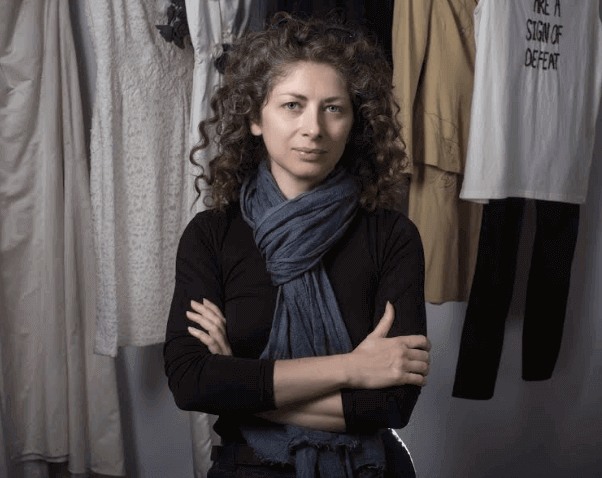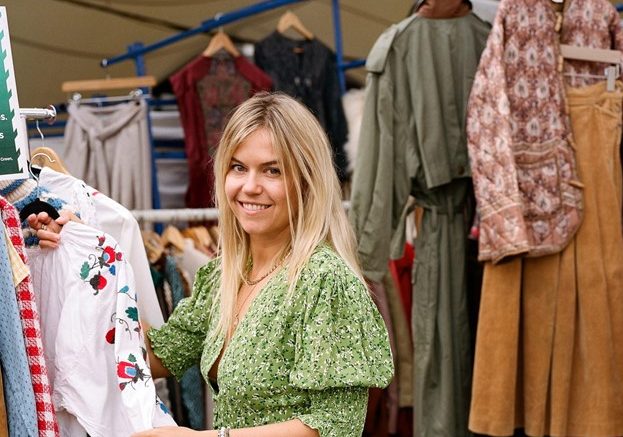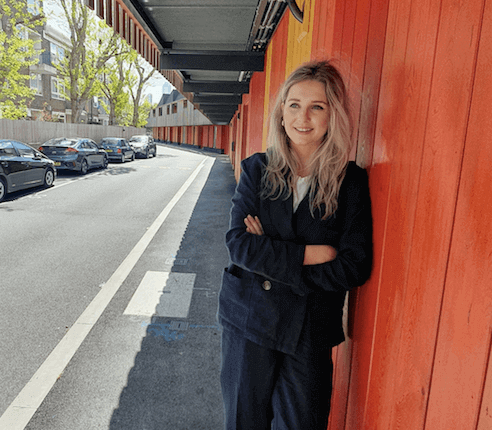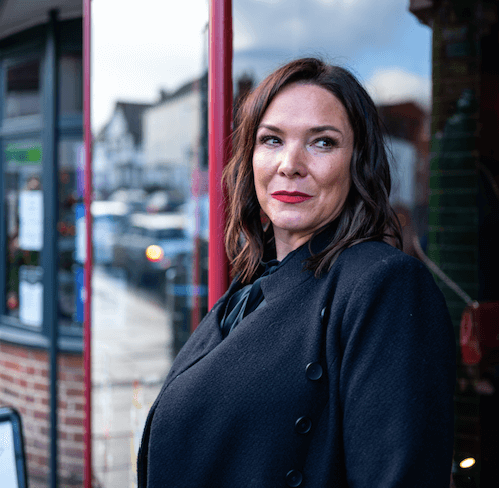In recent years, sustainability has become a popular trend throughout the fashion industry, benefitting not only our wardrobes but also the planet.
Across the past year in particular, the COVID-19 pandemic prompted a significant shift in the behaviour of consumers – a study conducted by McKinsey revealing that 64% of shoppers reduced their spending on footwear and clothing throughout the global health crisis, while over half (57%) of shoppers claimed they had made significant changes to the way they live in order to reduce their impact on the environment.
While sustainable fashion is undeniably in vogue, is this trend here to stay? Is green truly becoming the new black? TechRound spoke to a number of experts in the industry to get their opinions on sustainability in fashion, how it’s grown as well as predictions for its future.
Our Industry Experts:
- Samantha Harman – Style, Media and Branding Coach at the Style Editor
- Olga Dogadkina – CEO and Founder of Emperia
- Miranda Holder – Stylist
- Sarah Jordan – CEO of Y.O.U Underwear
- Lui Iarocheski – CMO of PlatformE
- Lucy Tammam – Founder of Atelier Tammam
- Rachel Sheila Kan – Fashion Sustainability Specialist & Troubleshooter at Circular Earth
- Sarah Swenson – Global Senior Sustainability Manager at Avery Dennison RBIS
- Susannah Davda – The Shoe Consultant
- Farleigh Hungerford – Founder of Farly
-
Charlotte Delobelle – European Brand Ambassador for Fashion Snoops
- Carolyn Rubido – Expert in Sustainable Fashion, Thrifting, Vintage, and Slow Fashion
- Stephan Stegeman – CEO and Co-Founder of Shop Like You Give a Damn
- Esther Knight – Founder of Fanfare Label
- Martina Spetlova – Fashion Lecturer at London College of Contemporary Arts (LCCA)
- Chantele Gibson – VP of Sales at Searchspring
- Susie Hasler – Award-Winning Personal Stylist and Founder of www.styledbysusie.co.uk
- Amerjit Briah – Founder and CEO of eTHikel
- Joanne Ooi – Founder of EA Festival
- Natasha Frangos – Partner and Head of Corporate at Haysmacintyre
- Jo Salter – Founder of Where Does It Come From
- Elkie Nicholas – Multi-Award Winning Fashion Designer
- Yen Wei Goo – Founder and Director of Paguro Upcycle
- Emma Pinfold – Founder of Bond Street to Your Street
- Laura Ward – Founder and Creative Director of EXEAT
For any questions, comments or features, please contact us directly.

Samantha Harman, Style, Media and Branding Coach at the Style Editor

“I predict that more people will start to invest in learning the keys to great style, as opposed to spend their money on more and more stuff.”
“One of the biggest complaints women have when they first come to work with me is ‘I have nothing to wear’ – and yet they’re standing in front of overstuffed wardrobes. I help them understand that they don’t need a whole new set of clothes to be stylish. It’s about using what they already have to create outfits they love.”
“Traditionally, styling has been seen as something for the rich and famous. But investing a little money in a session with a personal stylist can help you get more wear from your clothes and cut your shopping significantly.”
“Wearing a garment for nine months longer can cut its carbon footprint by more than 30 per cent.”
“I can see more retailers recognising the value of styling and making shopping more of an experience, rather than churning out fast fashion at a rate of knots.”
Olga Dogadkina, CEO and Founder of Emperia

How VR Fits Into the Future of Sustainable Fashion
“From a fashion perspective, there’s the increased return rates and just better visualisation of the product. But we also address the sustainability factor a lot.”
“With a couple brands we’re working with now, we’ll make their collections in 3D and they will start selling it five months before it’s actually produced. So they can pre-sell it and get the exact order quantities and only produce what they sold and avoid wasting time, money and resources.”
The Future of Fashion
“I think now, brands are starting to realise that this is the future and something that can be integrated into every step: design, production, sales, wholesale, so essentially every part of the cycle.”
“People, especially younger consumers, are so conscious about the whole environmental aspect of clothing that the brands that are at the forefront are actually winning with all the other aspects as well because people are keener on seeing that the brand makes the effort, rather than buying really fast and throwing away the next day because you wanted one Instagram picture in it.”
“The shift might be slow, however, what we’re seeing now is even when stores did reopen this year the footfall was really low. And that’s why brands have to adapt with the eCommerce shift and digital fashion experiences.”
“Pre-pandemic, everyone thought [the shift towards digital fashion] was something that might happen ten years down the line. Stores won’t die out but we probably won’t have quite as many of them because they’re just not needed and expensive to maintain. But the pandemic really accelerated this and brought those ten years down to right now.”
For any questions, comments or features, please contact us directly.

Miranda Holder, Stylist

“Fast fashion/High Street brands are often known for pinching styles and ideas from top designers or straight from the runway, hence why Zara (for example) is so popular. They will often bring the looks of the high-end to a more attainable level. I suspect that it could very well be something they might do with smaller, independent sustainable brands. This could be because they may want to be seen to be trying to be more sustainable, but they are often massive machines that will take time to change their production lines.”
“Fast fashion brands are, of course, known for their unethical production of clothes. So, I usually consult organisations who have a platform in this area of expertise, such as Good on You (Brand Ambassador is Emma Watson), Ecoage (Livia Firth), The Sustainable Fashion Forum. They are experts in this type of research and often have a full report on specific brands and also show the progress they might be making towards a more sustainable production. Good on You is particularly good on this. You can search by brand but also by topic, for example, ‘vegan leather’ or ‘vegan brands’.”
“To make fashion more sustainable, we need to educate people about the cost of fast fashion, encourage them to choose better – while not shaming them for their alternate choices. All we can do is continue the conversation and highlight brands we know are doing the right thing and make them more desirable. We also need more range in sustainable brands – both in the types of clothes made as well as price. A lot of the younger generations would prefer to shop sustainably but just can’t afford it, and we’re not enabling them to make the choice they rather would.”
Sarah Jordan, CEO of Y.O.U Underwear

“Fashion can never be sustainable at the rate it’s being consumed currently. As a society, we have to unlearn our mindsets and move towards a slower, more need-based way of consuming and living.”
“Sustainable Fashion is a trend right now, but it has to become an ongoing movement for the survival of our planet! The current issues which need addressing is the blatant greenwashing from fast fashion brands and the necessary education for consumers – we can all be activists and ‘vote with our wallet’. We see a future where people buy only what they need and pre-loved, already-in-existence clothing is the norm.”
For any questions, comments or features, please contact us directly.

Lui Iarocheski, CMO of PlatformE

“All of us are quite familiar with the industrial revolution. We all know that it was a mark in human history that deeply changed our society, our economy, and also our consumption habits. What some of us don’t know is that the first three industrial revolutions led the Fashion industry into mass production, which in consequence led to overproduction, and because of that, the industry has to deal with its biggest challenges: unsold inventory and waste.”
“Enormous piles of unsold clothes are languishing in warehouses around the globe, saddling brands with millions of dollars of inventory. The products that do not sell are often discarded and even burned in landfills. But what if there was a viable shift to a new model of fashion production: rather than producing stock in advance, each garment is made after the point of purchase – meaning that every item has a home?”
“We are now shifting from an era of mass production to an era of mass customization, where the main focus is to create a super-empowered customer and produce only what is sold. I believe this is Fashion’s main road towards more sustainable practices. Mass customization or on-demand manufacturing will not only tackle the overproduction issue but will also leverage nearshoring and a high-value-generating fashion industry that is the result of a joint effort between people and technology linked via bold strategies.”
“The main goal of companies like PlatformE is to show that producing better and producing less is totally feasible, not only in terms of costs but also in terms of customer experience. The key is simple: premium technology and supply-chain knowledge.”
“With well-structured digital tools, 3D digital product creation, and on-demand manufacturing, brands can prevent textile waste on a massive scale. All of us as consumers and especially the environment are very grateful for that.”
Lucy Tammam, Founder of Atelier Tammam

“I started working in sustainable fashion in 2004, when it was still very niche. It was just a bunch of small indie labels trying their best, but with nothing standardised, chopped up supply chains and very few options (at any stage of production). It was the early days when people would be proud to buy fairtrade coffee and bananas, but wouldn’t think twice about the clothes on their back.”
“Since then, sustainability really has gone mainstream. On the surface it’s great that it’s now part of the conversation. But as an insider I can see there’s an awful lot of green washing happening – companies realise the power of the message and use it as a marketing tool rather than making any actual difference.”
“Now, the real power shift is coming from the consumer. The over-consumption message is getting through and people are starting to turn their backs on fast fashion. It’s not just about buying ethically; it’s also about buying less.”
“One of the most exciting ideas I think we’ll see more of in the future is collaborative couture: hundreds or even thousands of people owning a small piece of a single high-end garment, the complete other end of the spectrum to fast fashion – where one person owns many cheap garments. Collaborative couture gives the buyers that thrill of owning a piece of couture, without the waste. And crucially, it is being made into a really rich experience with digitisation – integrating tech to connect consumers to the artisans who made it.”
For any questions, comments or features, please contact us directly.

Rachel Sheila Kan, Fashion Sustainability Specialist & Troubleshooter at Circular Earth

“I came into sustainability or knowledge of it 15 years ago, as a lowly designer I felt I could have no influence on it until the CEOs decided to go forward with it. I would go along to the ethical fashion forum events and not quite know where to place myself being younger and not really well equipped with confidence. I waited and waited to see if the CEOs made any moves – nothing, nada, ziltch! It was seen as ‘what the hippie brands do’, not something for mainstream fashion.”
“Mainstream was all let us copy what’s on the catwalks, about trend, being of the moment and one upping the competition on price. I felt sick having to design it after many years being in this ‘creative’ process of making it commercial and seeing the over production that was so apparent in the warehouses and back rooms full of dead stock. Focusing on the new thing to sell and the next best thing and forgetting the old stock – that could be written off to charity or worse incinerated.”
“Through my career I have seen the industry start to take it on, be it very small and incremental sometimes, I now see that we have to see it as a journey for us all. Large, small and medium companies are all now finally starting to see that sustainability is our future and frankly if they don’t get on it now or soon they will not survive the next wave of consumer needs towards sustainability and long term, the regenerative.”
“I have been in the industry for a long time, and I first saw the start of globalising and moving industry back in the late 90s. I worked in a UK factory for my university work placement, so many skilled individuals in my home town all worked on the floor for many years. Fast fashion and reducing production costs over all even if you were a brand with larger margins started to creep in. I went to try and do the same summer work the following year and they said oh dear all the production moved to India. So it started building at huge scales and over production. I would look at it all and say surely this is unnecessary, even as a younger designer – but was told i was lucky to be working in a creative industry and best to get on with it.”
“It does give me solace that the industry can move pretty fast when it needs to. Now is completely the right time to get into building your brand in sustainability. I see a lot more production coming back to the UK and I see people transforming their factories all over the world. It is slow – but steady, and there are people that want to be a part of the change.”
“I think that legislation is not enough and it would help give a nudge to companies sitting on the fence. I have spoken to many, and it is seen as a big financial investment to do the work. Many medium sized brands wait for the legislation or the trends and are reactive to the big brands – ‘let them do it first’. I don’t blame them at all – it’s not an easy path – and the fabrics and components from source hide large MOQs and limited expensive options at wholesale.”
“Making it economically viable to start to create in a sustainable way is vital. We as an industry must make it easy for the consumer to make the switch, in price and ease. To understand the choices that they are making in a simple way.”
Sarah Swenson, Global Senior Sustainability Manager at Avery Dennison RBIS

Has awareness of sustainability within the fashion industry grown?
“Yes, sustainability has become the responsibility of multiple stakeholders across the supply chain in a variety of roles rather than just a brand’s sustainability team. Most individuals now realise they play a role in creating a solution rather than exacerbating the current problem. Brands have also realised sustainability is much more than a marketing strategy, but rather a way to create long term business growth by not being as reliant on virgin resources and reducing their risk due to changing environments.”
If so, why? What are the key factors that have caused this?
“Initially, I believe brands saw sustainability as a marketing tactic to gain market share from competitors, but increasingly now many are doing it to adapt and prepare for a global economy that will by necessity need to become more circular to survive, all while adapting to climate change risks.”
“Supply chain volatility has played an increasing role in the very global apparel supply chain. Consumers also play a major role, with the younger generation becoming more educated and aligning their apparel purchases to brands who promote their values.”
“Transparency is being required by consumers. Today’s digitally connected consumers are able to access information about both the brand and their garment. Brands that are not transparent about their roadmap to design and manufacture more sustainable products are assumed to be hiding detrimental impacts, even if they are not aware or are not collecting the data. Investors are also watching global ESG (Environmental, Social, Governance) ratings for possible risk of a company not being prepared to adapt to environmental changes or changing consumer mindsets.”
What are your predicted trends for its future
“Sustainability will become a standard for operating in the apparel industry much the way that restricted substances policies became a standard over a decade ago now. Brands that cannot show transparent sustainable actions with accurate data, as collected digitally, regarding their product’s impact will not meet consumers nor investors’ increasingly rigorous demands.”
For any questions, comments or features, please contact us directly.

Susannah Davda, The Shoe Consultant

“Sustainability, or what I think is more accurately termed “low environmental impact” is currently a topic on almost every UK fashion brand and retailer’s agenda. Some companies approach this subject from a marketing point of view, asking “What do our customers want to hear from us?” and adjusting their products accordingly.”
“Others have reworked or built their design, development, sourcing, packaging and shipping processes to attain the lowest possible environmental impact, then communicated that to their customers. Whichever methodology they have used, there are very few UK clothing brands and retailers who have not mentioned sustainability in their marketing in the past year.”
“Footwear brands in particular have struggled to reduce their environmental impact, due to the diversity of components and complexity of supply chains involved in manufacturing shoes. Greenwashing may have been even harder for footwear customers to spot. Some shoe companies have pointed to their use of recycled, natural or leather alternative upper materials, whilst not mentioning the components which don’t have such a positive story to tell.”
“Every week I read about a new footwear company looking to make their products with as low an environmental impact as possible. But despite the boom in new shoe brands with a sustainable focus, ease of recycling at end of life has yet to be designed into many shoes from the outset.”
“Creating the perfect zero environmental impact shoe is currently impossible. Even the well-known sustainable shoe brands have flaws: most ship components and finished footwear around the world and many do not offer a take-back recycling scheme.”
“Producing low environmental impact footwear can be approached from four different angles: Create an entirely biodegradable shoe – from leather, natural fibres, or new lab-grown materials. Make footwear locally from locally sourced materials – a return to the traditional shoemaking model, reducing transport emissions. This approach also lends itself to made-to-measure and repair.”
“Use recycled materials – each component having a minimum percentage of recycled material. Make a shoe that lasts a long time and is repairable – comfort is a challenge when more solid, long-lasting materials and construction methods are used.”
“I predict that a growing number of shoe brands will adopt one or more of these angles in the near future. In combination, the approaches will further enhance a footwear brand’s eco credentials. Think shoes made from recycled materials that last for a long time, or locally made footwear that is biodegradable.”
Farleigh Hungerford, Founder of Farly

“The results of environmental damage paralleling a desire to protect the planet has resulted in generations now wanting alternative ways to live sustainably. This has led to an increase in second-hand goods as people try to reduce, reuse and recycle. People are rethinking ways to protect our natural world socially, economically, and environmentally and that includes how we manufacture, shop and interact with products.”
“Major changes in consumers habits have shown trends are no longer dictated by brands but more by individuals. Now more than ever people are starting to value good curation as we start to appreciate a more considered, sustainable product curation- being influenced by one’s social followers and community is helping drive this. People want to portray their individualism, set their own trends – all while being eco-conscious. We believe Gen-Z’s social shopping habits will continue to grow.”
“It is predicted that the resale market will be bigger than fast fashion by 2029 as traditional charity shops sell more items and the for-profit resale market balloons. (Thred Up)”
“There will be an eventual move away from fast fashion products to more responsibly sourced sustainable products and everyone will want to do more to look after the planet and products we buy. Ideally these changes will dramatically increase the life-cycle of garments, promote a circular economy and reduce carbon-cost-per-use.”
“In fact, Farly was created as a reaction to the fast fashion waste, mass production and onslaught deadstock currently experienced in the fashion industry, with a mission to revolutionise the way people shop online making it fun, creative, social and better curated.”
“The one thing we want all Farly’s community of users to have in common is their fundamental desire to protect our natural world. We know that sustainability and consumption do not easily go hand in hand, but our curation of products and creatives are challenging themselves to be the best possible versions of themselves when it comes to production, using sustainable materials and transparency.”
For any questions, comments or features, please contact us directly.

Charlotte Delobelle, European Brand Ambassador for Fashion Snoops

“I very recently spoke at the Brand & Licensing Innovation Summit about, among other things, the importance of sustainability in fashion, which is getting a bigger share of voice because, in a nutshell, various economic, ecological and health crises have generated new purchasing behaviour.”
“Educated, over-informed, curious and involved in social networks, young consumers are perfectly able to decipher the marketing and commercial strategies of brands. They are becoming more and more demanding and responsible. They demand dialogue, respect, transparency and credibility from brands in return for their loyalty. Young consumers don’t buy by chance; their consumption behaviours are the result of determinants that are necessary to know and understand well in order to optimise marketing decisions.”
“Generation Z attaches great importance to price, but not in the traditional sense of finding a ‘bargain’. Instead of flocking to the fast fashion that really took off with millennials, Gen Z attaches more importance to the origin and production process, understanding that a higher price is not only indicative of higher quality but ethical and sustainable production as well.”
“More eager than other generations to have a unique style and create unique content, Gen Z appreciates brands that understand their desire for uniqueness, particularly through capsule collections, personalised or tailor-made products.”
“Brands need to understand that a trendy product is not enough to satisfy young consumers. Today, brands must have a strong identity, transmit positive values, know how to communicate through social networks and have a good CSR policy.”
“Consumers will have an easier time supporting a brand if it is transparent in its communication and if it creates a climate of trust. They want to be valued and reassured by taking their specificities into account.”
Carolyn Rubido, Expert in Sustainable Fashion, Thrifting, Vintage, and Slow Fashion

“I believe that the sustainable fashion industry will be THE fashion industry in the next 50 years. The reason why I say this is because According to sustainable fashion industry statistics, the market is expected to grow to $9.81 billion in 2025 and $15.17 billion in 2030 at a CAGR of 9.1%.” (The Business Research Company, 2020).”
“If we continue to spread awareness about sustainability and how much of an impact one person can make by taking part and making an effort on dressing consciously, I truly believe that sustainable fashion will be the ONLY way that people will dress.”
“In general, we are starting to become more eco-friendly in our everyday lives, however the fashion industry has always been known as one of the biggest polluters in the world. There are major changes happening in the fast fashion industry as well because they need to keep up with this era of the eco-friendly consumer.”
“I believe that even the fast fashion industry has been forced to make changes in their business models for their workers as well as in their materials and upcycling.”
“Major brands are noticing the necessity and demand for sustainable fashion and they are delivering. The sustainable fashion movement is here to stay forever and we are only seeing the tip of the iceberg…I can not wait to see what the future holds.”
More from Interviews
- Meet Jaron Soh, Co-founder & CEO of LGBTQIA+ Mental Wellness App: Voda
- Meet Nathalie Morrison: The Founder Behind Astrea, the Fashion-Tech Brand Putting Lab-Grown Diamonds at the Heart of Luxury
- Meet Badr Ward, CEO And Founder Of Education Platform: Lamsa
- A Conversation with Andrej Persolja, Founder of We Fix Boring
- A Chat with Kebbie Sebastian, CEO and Founder of Merge
- Meet Dr Agnès Leroy, GPU Director at Cryptography Tool: Zama
- Meet Roman Eloshvili, Founder of ComplyControl
- Inside Mobile Payments with Bojoko’s Ville Saari
Stephan Stegeman, CEO and Co-Founder of Shop Like You Give a Damn

“One of the most interesting trends in sustainability and fashion is the tackling of false environmental claims. Or, to put it more positively: the rise of honesty. Companies that promote their products on the basis of misleading ‘green’ pretences are under increasing pressure.”
“Internationally, governments are becoming attentive to this practice called ‘greenwashing’. The Dutch Authority for Consumers & Markets (ACM) recently announced investigations into misleading sustainability claims. ACM has drawn up five rules of thumb that companies must adhere to, such as ‘substantiate your sustainability claims with facts, and keep them up-to-date’. Their British counterpart, the Competition and Markets Authority (CMA), also recently published a guideline to combat these false claims and ‘will investigate how products and services claiming to be ‘eco-friendly’ are being marketed’.”
“Although these measures will apply to other industries as well, the impact on the fashion industry will be enormous, considering the size of the industry and the intensive and often vague production processes of clothing. In order for the authorities to monitor claims, the demand for reliable data of these processes will increase.”
“Companies based on idealism tend to be more transparent about the production of their clothing. At Shop Like You Give a Damn we prefer to speak of ‘more sustainable’ instead of ‘sustainable’. The only thing that’s actually sustainable is to buy nothing at all. At the same time we strive to inform our audience on greenwashing and how to recognise it. Noah, an American clothing brand, turned this ‘reality check’ into an advertisement, by stating: “We are not a sustainable brand.” They received praise by admitting they have a long way to go and this will undoubtedly inspire other companies to do the same.”
“With authorities making tough demands, idealistic companies setting the right example, and consumers becoming better informed about practices like greenwashing, the trend of honesty will be unstoppable.”
Esther Knight, Founder of Fanfare Label

“The fashion industry has taken on new depths in the past year due to the Covid-19 pandemic; we are more starkly aware of the poor treatment of garment workers due to fast-fashion brands failing to pay up when factories were unable to process garments at their usual capacity. These ethical concerns have led to a growth in supporting smaller businesses that are more sustainable in their practices: workers and the environment.”
“Sustainability has grown into consumers everyday vocabulary, resulting in a rising demand for garments to be more sustainable. Whether from certified materials such as Linen OEKO-TEX or using recycled materials for all or some components. At Fanfare Label, this is an integral part of company. Ensuring that we aim to make our garments as sustainable as possible, for now, and for the future.”
“Good clothes are intended to last, and I think this is a growing concept that is being ratified. Buy less but buy better. Often, smaller businesses that have begun during or just before the pandemic have greater control over their supply chains, meaning that they can start with sustainability at the forefront of the brand. As a result, it is easier for brands of the future to take their lead and incorporate sustainable practices from the beginning.”
“Technological innovations have ensured that developing new materials may also be the way forward for more sustainable practices. For example, mycelium leather uses the root of fungi to produce the leather alternative. These innovations will continue to grow and divert from less pollutive and harmful materials that have enormous consequences once the garments life is considered to be over.”
For any questions, comments or features, please contact us directly.

Martina Spetlova, Fashion Lecturer at London College of Contemporary Arts (LCCA)

“There has been a slow pace of implementation of sustainable solutions by fashion companies to offset the negative environmental and social impacts of their industry.”
“We have made a radical shift in our priorities over the past 18 months, which will manifest itself in the choices we make going forward. Consequently, we will seek brands that are trustworthy and genuinely concerned with the “common good.”
“It seems that the best thing to come out of this challenging time is that we, as individuals, understand that our actions have consequences. I believe that this will increase the emphasis on sustainability over time.”
“The demand for real sustainability, as opposed to greenwashing, is going to increase among consumers in the future.”
“I run an ethical brand, but I am also a consumer and I believe that when CEOs, managers, and employees get behind sustainability, it can affect a company’s culture positively.”
“Future talent is something we rarely discuss. Our students are now very interested in sustainable fashion and we are educating a new generation of designers who have certain values and would like to work for fashion companies that put sustainability and social responsibility first.”
“Just as consumers choose which brands to buy, they will make the right future choices about where to work. Today’s goal-built companies are both appealing to consumers and employees.”
“The fashion brands that come out on top will be those whose business practices already incorporate sustainability and transparency.”
Chantele Gibson, VP of Sales at Searchspring

“Sustainability in fashion is more than a trend, it’s a movement – one that is here to stay. There are so many brands out there who are dedicated to making a difference in the world spanning all verticals.”
“From beauty brand like Nourished Life to Girlfriend Collective, featuring activewear made out of recycled materials, or Ruggable, a home decor retailer dedicated to making “the world a bit better than we found it”, we’re seeing high growth in sustainable ecommerce practices. It’s no secret, Gen Zs demand sustainable retail, and indirectly represent 40% of all consumer spending.”
“As we move into a new era of retail, brands across all industries will need to adapt their practices to meet the evolving shift in shopping habits.”
For any questions, comments or features, please contact us directly.

Susie Hasler, Award-Winning Personal Stylist and Founder of www.styledbysusie.co.uk

“There’s an incredibly loud buzz around sustainable fashion right now – and I’m meeting more and more women who want to shop ethically.”
“But that buzz seems to turn into more of a quiet hum once you get on to the high street. While luxury brands champion the ‘reuse’ or ‘ethical’ message, usually next to a garment that costs high fashion money, this call to arms is yet to filter its way down effectively.”
“Although the message coming from the top is loud and clear, that our clothes shouldn’t cost the earth, in financial terms, when it comes to sustainable outfits, they do. The reality is this: most women still shop on the high street. Certain retailers are embracing the change – stand up H&M, Mango, and Zara.”
“But the ranges are extremely limited and unexciting. The H&M Conscious range is made up of basic tees but that’s as far as it goes. If a brand is going to offer a sustainable line, they need to provide more options for clients.”
“In an ideal world, everyone would have access to a Stella level of sustainable fashion – because the demand and interest is there for it. It shouldn’t just be the preserve of the rich.”
“I encourage women to shop wherever they choose – so long as they buy wisely and make good choices. Can they wear it three different ways? If so, buy it. Any type of wasteful purchasing – even if it’s an item from a charity shop – isn’t sustainable. So how we shop, as well as what we buy, needs to change. I’m a huge champion of the high street.”
“But it’s intent on producing too much, creating unnecessary waste and overwhelming shoppers with too much choice – leading to wasteful buying, grabbing cheap items on the go.”
“Our high street shops need to be smarter, and women need to shop wisely, then and only then, will this sustainable fashion buzz really make an impact on the environment.”
Amerjit Briah, Founder and CEO of eTHikel

“Sustainable fashion is consumer-led, and forcing brands to listen – especially since consumers are willing to spend more on sustainable products. Sustainability won’t be a choice for brands, but a requirement.”
Trends:
“Consumers will favour fashion brands doing good for the environment, people and animals – they’ll support smaller brands, especially limited collections, from sole founders, family run, with handmade products or UK made (based on trends we see while adding new brands on eTHikel).”
“Consumers will be even more sustainability savvy – they will scrutinise and call out brands as they become more aware of practices like greenwashing. Brands are already finding it harder to hide these practices, and this pressure will keep rising.”
“Consumers will invest in slow fashion – clothes that last, for several generations. There is a movement in re-wearing outfits – a lot of celebrities are also supporting this – people feel under less pressure to wear something new for every occasion.”
“Brands will recycle more – materials and fabrics are already being reused by some fashion brands to create new items, whether given back by customers or from landfills. Reusing single use plastic to make clothing or accessories will also be more common.”
“Transparency will be key (it’s one of our pillars) – the fashion industry will need to be more transparent about its practices or they will lose customers who won’t mind shopping elsewhere.”
Hopes:
“Payment providers should be held responsible for carrying out due diligence on online sustainable fashion merchants’ ethical credentials – they should review their Acceptable Use Policies. Card schemes will also review them, preventing unethical merchants from receiving online payments.”
“Ethical online retailers would not sell customer data or share data with third parties for financial gain, and this should be a requirement for sustainable fashion brands selling online.”
For any questions, comments or features, please contact us directly.

Joanne Ooi, Founder of EA Festival

“The main problem with the fashion industry is the model of linear consumption, take-make-dispose, which continuously gobbles up new natural resources.”
“Unless both consumers and the fashion industry break this spiral to the bottom, fashion will continue to be one of the biggest consumers of natural resources. Of course, there are brands trying to do their part to mitigate climate change, but these measures are, at best, palliative band-aids on the main problem or, at worst, greenwashing. (Again, the main problem is a non-circular business model.)”
“In the current linear consumption model in which manufacturers have nothing to do with the garment once it is sold to the end-consumer in a retail store, manufacturers have only one incentive – to buy low and sell high. The result is fashion made at the cheapest cost, often with disregard for methods and labour regulation.”
“But imagine if garment manufacturers retained the clothes they manufactured on their balance sheet because they were engaged in a rental or repurchase model, they would have strong incentives to make the garments durable and high quality in the first instance, so that their lifetime use-value and profitability could be maximised. Anything short of breaking the take-make-dispose business model is like trying to melt an iceberg with a BIC lighter.”
Natasha Frangos, Partner and Head of Corporate at Haysmacintyre

“Before Covid-19 hit, the fashion industry had already started to become more sustainable. Consumers were actively trying to reduce their waste amid growing awareness of the environmental impact of fashion, and many brands adopted environmentally friendly initiatives. Now, the demand for more sustainable fashion has intensified as consumers are demanding more ethical practices, having given greater thought to the implications of their consumer behaviour during the pandemic.”
“While cash-strapped businesses may feel sustainable operations aren’t an immediate priority, given the current direction of demand, sustainability could prove to be a valuable part of recovery strategies. To stay relevant, brands must prioritise customers and move with demand, which includes employees too. Working for a brand that places its ethics at its core will be as important as buying from one, so businesses can consider talent retention, alongside keeping customers and addressing a collective moral imperative, as reason to be more sustainable.”
“Additionally, brands facing complications with accessing overseas stock may wish to review the suppliers they work with. Working with local producers could manage risks of relying on far-afield manufacturers, all whilst supporting the local economy and lowering emissions by reducing travel.”
“The way products are designed and created in the fashion industry has long needed a shakeup. With designers speedily creating new collections for different seasons, brands’ frantic competition to bring out more lines has negative environmental implications. Seasons are becoming less distinct, partly due to climate change, and the relevance of seasonal collections must be questioned.”
“Although many businesses have been in survival mode, a company’s future is undoubtedly linked with its sustainability credentials. Fashion retailers must alter operations to improve their environmental outlook: and although not an easy transition, as an industry continuously resilient in the face of change, making a real difference is far from impossible.”
For any questions, comments or features, please contact us directly.

Jo Salter, Founder of Where Does It Come From

“In recent years it seems that sustainability in fashion has gone from niche to mainstream. Media coverage is frequent and a growing number of customers, 55% according to a Google survey, put sustainability as their top shopping priority. Greenwashing – using eco messaging in marketing – is now the norm.”
“Unfortunately it’s still early on the journey towards truly sustainable fashion – clearly demonstrated by today’s media reports focusing on the large amounts of virgin plastics being used to make new fashion items. Awareness is growing but there is a gap between intention and action – the same Google report shows that despite sustainability being top priority, what actually happens is that price and style take over in the purchasing moment!”
“The UK ethical fashion market is slowly growing, valued at £53 million in 2019. This slow growth hasn’t been helped by the pandemic – The success of brands like Boohoo and the long queues outside Primark after lockdown clearly showed that fast fashion addiction is booming. The ethical fashion market isn’t chipping away at the £54 billion UK apparel industry just yet.”
“The good news is that growing climate awareness is pressuring brands to up their sustainability – in words and even deeds. Smaller brands with ethics at their core raise the bar, leading to higher expectations. Greenwashing is actually a good sign, showing that mainstream brands recognise this customer demand. Substantiating these claims is the next step – legislation is starting to appear to ensure brands don’t bend the truth.”
“The final piece of the puzzle is culture change. Valuing our clothing as close companions rather than one night stands will end the model of cheap, throwaway, damaging fast fashion and open the door to a new fashion business model that supports the environment as well as the many people working in the industry.”
Elkie Nicholas, Multi-Award Winning Fashion Designer

Elkie Nicholas, a multi-award winning fashion designer. She has recently left the industry to, in her words ‘make up’ for a career spent travelling the world for the rag trade.
“Having spent a lifetime travelling to the Far East in search of the finest fabrics and affordable, skilled labour, to realise my designs, I just reached a point where I knew that I had to start to undo some of the damage my industry inflicts on the planet. My children were becoming young adults and for their sakes it was time to do something positive.
My generation was reckless and wasteful, and my industry, was one of the worst abusers of all. Fast fashion and the throw away culture, travelling the world in search of the next big trend, chemical dyes and manmade fibres, have all put a terrible toll on the planet. However, to murder the cliché; we may be the first generation to realise the extent of the damage we have done, but we are also the last ones who can still do something about it. The industry is changing, technology is enabling us to recycle plastic into fabric, resale sites are booming, ‘make do and mend’ is becoming cool, hired wedding dresses are even making the news – thanks to Carrie Symonds. Out of my need to do my bit Trees4Travel was created. I decided to target transport, as my carbon miles were what concerned me most.
Her new venture was founded with travel entrepreneur husband Nico. Nico was embedded in the tourism industry, working with major players across all sectors from accommodation through transport. Together they launched Trees4travel. A tech start up with a green heart. Trees4Travel is a carbon offset company with a difference.
“We began with the watchwords; Simple. Tangible. Affordable” says Elkie. “People have become highly sceptical of carbon offset, so in order to engage users we had to demonstrate that it can be done easily and effectively, and done well.
Together she and Nico created an online platform that calculates all elements of a journey’s kg of CO2. It then allows the traveller to convert that CO2 (at the click of a mouse), into indigenous trees planted using verified rewilding projects around the world. All this for the price of a cup of coffee. The platform enables users to see where their trees are being planted and watch their carbon footprint ‘fade’ as they plant, and their trees grow. It is genuinely rewarding. Most importantly the site helps travellers make better, more informed choices about their travel and accommodation, showing them the ‘cost’ to the planet of every journey decision, and the possible better alternative options.
“We know it is not too late to clean up the mess we have left for our kids. We can still show them how to think about their purchase decisions, to make ethical choices, and to feel they can enjoy fashion – guilt free, if they buy well” Elkie concludes.
For any questions, comments or features, please contact us directly.

Yen Wei Goo, Founder and Director of Paguro Upcycle

“There is certainly more awareness around sustainability within the fashion industry and consumers are increasingly looking for organic and sustainable fashion options.”
“That being said, greenwashing is an issue for fashion brands. For instance, those that promote the use of recycled materials but use heavily processed materials, organic cotton but not 100% organic cotton. This is in addition to the ongoing ethical issues around the treatment and pay of workers.”
“Consumers need more transparency and education to purchase quality, not quantity.”
Emma Pinfold, Founder of Bond Street to Your Street

“Only now, are we beginning to understand the lasting impact that the pandemic has had on the fashion industry, on both a national and global scale.”
“Unsurprisingly, the ‘Fast Fashion’ market decreased by 12.32% in 2020.* Suddenly accessibility, speed, and current fashion trends were no longer mitigating factors in our fashion purchases, especially as here in the UK we couldn’t even enter a clothes shop for most of 2020!”
“Consumers had the time and the knowledge to broaden their horizons with their purchases. Suddenly, we had fewer places to go to show off different outfits and little or no need for fancy one-off outfits for weddings or exclusive events. Customers began to search in different places for bespoke and unique products, which took precedence over mass-produced copies.”
“Many of my clients say that they have been considering shopping more sustainably over the past few years but didn’t know where to begin. The pandemic and the focus on shopping locally has given them a chance to start doing this through businesses like mine, which sell high end, pre-loved designer items online as well as in-store.”
“Whilst experts predict that the fast fashion industry could return to pre-pandemic levels by 2023, we as the consumers need to question whether we want this to happen? The fashion industry already accounts for 8% of the world’s greenhouse gas emissions. **”
“Consumers need to push back by supporting sustainable businesses such as Emma’s where there is no compromise on style or designer labels. If we don’t, greenhouse gas emissions from the fashion industry could increase to 49% by 2030. **”
“This stark reality means that if the fast fashion industry continues to manufacture and sell garments at this rate, the industry will end up making irreversible impacts on the world within the next decade.
Let us not forget what we have learned over this past year and maintain consumer habits that lean more towards the important choice of quality and sustainability rather than the destructive lure of mass-produced fashions.”
*Statista, Research and Markets **Quantis
For any questions, comments or features, please contact us directly.

Laura Ward, Founder and Creative Director of EXEAT

“Across my 18 year career marketing some of the world’s best loved brands, I encountered all-to-often sustainability being treated as panicked afterthought as opposed to a guiding principle of manufacturing. At Exeat we bake sustainability into every aspect of the company, from our supply chain which focuses on use of recycled yarns, through to our compostable packaging. This allows us to create ecologically pioneering products, placing us within the top 1% of fashion brands globally and creating a blue-print for a better tomorrow.”
“We have a triangular approach to sustainability, tuning-up our impact across not just the environment, but society and the economy too. Each one of our garments is made from world-leading sustainable yarns including QNOVA and ECONYL with an ultra-low carbon footprint, we only work with ethically certified factories in Europe and we donate our deadstock fabric to local community sewing groups and colleges. We believe that as we phase out single-use plastic from our lives and choose to drive electric cars, we should think about the impact our clothes have in the same way.”
Trends:
“Traceable yarn provenance, ie which field in Bangladesh our cotton came from, will go from niche to norm when it comes to our clothing choices. There are already some game-changing innovations in this area and it will help hold the industry to account.”
“Over the next five years we’ll also start to see heavy regulation and levy’s around garment’s deemed to be high carbon, for instance ‘fast fashion’ – just as we see in the automobile industry.”



